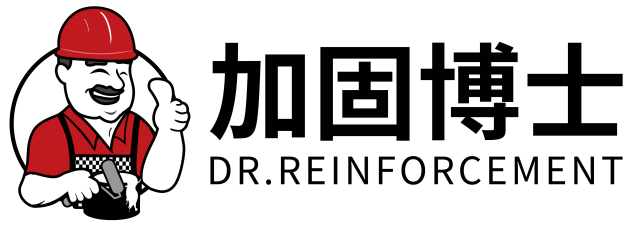Tensile Strength: The Foundation of Carbon Fiber Reinforcement
Molecular Structure and High Tensile Capacity
What makes carbon fiber cloth so tough? Look no further than its molecular makeup. These fibers consist of lengthy carbon atom chains connected through powerful carbon-carbon bonds, giving them exceptional tensile strength. Graphitic structures within the fibers also contribute to this impressive strength and rigidity. At the molecular level, everything lines up just right to create both strength and flexibility in carbon fibers. Studies keep showing how carbon fibers beat out conventional materials such as steel and plastic hands down. Take steel for instance it usually handles about 500 MPa of tension force. Carbon fiber cloth? That number jumps well over 4000 MPa. No wonder engineers love using carbon fiber when they need something light but super strong for various applications.
Load Distribution Mechanisms in Composite Systems
Carbon fiber cloth is really important for spreading out loads in composite systems, which helps stop those annoying localized failures that nobody wants. When we put carbon fibers into composite materials, they actually spread the weight all over the structure instead of letting it concentrate in one spot. This makes sure stress gets distributed evenly throughout the whole thing, and honestly just makes everything last longer. Most engineers know that when carbon fiber reinforcement works well in structures, it does an awesome job at distributing those loads properly. Look at industry standards if anyone doubts this claim CFRP materials keep showing off their strength in places like airplanes and cars where weight matters so much. Take Porsche's 918 Spyder as proof. Its CFRP monocoque frame handles all sorts of dynamic loads during driving conditions, which explains why manufacturers love using carbon fiber cloth for making things both light and tough at the same time.
Shear Resistance: Enhancing Structural Stability
Adhesive Bonding Techniques for Stress Transfer
Getting good shear resistance from carbon fiber reinforced materials really depends on how well we apply adhesive bonding techniques. There are two main approaches here mechanical methods and chemical treatments that stick those carbon fibers firmly to whatever surface they need to adhere to. When it comes to surface prep work, this makes all the difference for shear strength. Research has actually demonstrated that when surfaces are properly prepared, the resulting bonds perform much better. Take sandblasting as one common treatment method for instance lab tests show these treated surfaces can boost bond strength by around 40% compared to just plain old untreated surfaces. What kind of adhesive gets used matters too because different glues handle stress transfer differently. Epoxy resins tend to stand out in this area thanks to their tough chemical makeup which holds up under pressure. That's why many engineers spend time comparing different adhesive options before settling on what works best for their particular project requirements.
Impact on Lateral Force Resistance
Adding carbon fiber to building structures makes them much better at standing up against sideways forces like strong winds or earthquakes. The reason? Carbon fiber just happens to be super strong and good at spreading out stress over larger areas instead of letting it concentrate in one spot. We've seen this work wonders in real world situations too. Take those high rise buildings hit by hurricanes recently - ones reinforced with carbon fiber fared way better than others. Most engineers who deal with these things day in and day out will tell anyone listening that carbon fiber is worth considering because it really holds up against side loading forces. Some numbers floating around the industry suggest buildings with carbon fiber reinforcement show about 30% better performance against lateral forces than standard materials. That kind of boost explains why more architects are starting to specify carbon fiber options in their blueprints nowadays.
Crack Propagation Prevention in Reinforced Structures
Elastic Restraint Mechanisms at Micro-Crack Sites
The elasticity of carbon fiber helps stop those tiny cracks from spreading and growing bigger, which keeps reinforced structures safe and lasting longer. Carbon fibers mixed into composite materials can actually soak up stress and spread it out through the whole material, making cracks much less likely to keep going. Tests done recently showed that carbon fiber fabric really works at stopping cracks from getting worse in sample materials, which explains why engineers keep turning to it for important structural jobs. What this means practically is huge for things like buildings, bridges, and parts used in airplanes. Without these cracks spreading, structures stay intact and safe for far longer periods than they would otherwise.
Fiber Alignment Strategies for Damage Containment
Getting the fibers properly aligned makes all the difference when it comes to keeping damage contained in composite materials. When done right, this alignment boosts both tensile strength and how well the material resists cracking. Manufacturers typically work with precise fiber orientation and layered construction methods to get these benefits out of their products. Research shows pretty clearly that when fibers run straight through the composite, they really do make a big impact on strength while holding back cracks from forming and spreading. Good fiber placement involves maintaining even tension throughout the weaving process and watching those fiber angles closely so everything performs at its best. Beyond just making composites stronger mechanically, proper alignment actually helps prevent damage from happening in the first place. This means longer lasting structures when using carbon fiber reinforcement, which is why aerospace engineers pay so much attention to these details during production runs.
Long-Term Durability and Environmental Resistance
Corrosion Resistance in Alkaline Environments
Carbon fiber cloth stands out for its ability to resist corrosion, particularly in alkaline settings, which makes it a great choice for reinforcing concrete structures. Traditional materials like steel tend to corrode over time, but carbon fiber stays strong even when faced with harsh chemicals. Research into this material has consistently shown better performance than many alternatives when put through these tough conditions. The fact that carbon fiber doesn't corrode means structures last longer, cutting down on maintenance expenses in the long run. What's more, building codes and industry standards now include tests specifically for how well composite materials handle corrosion, something that supports the growing adoption of carbon fiber solutions across various construction projects.
Thermal Stability Across Temperature Extremes
What makes carbon fiber cloth really stand out in construction work? Look no further than its impressive thermal stability. Unlike many materials, carbon fiber keeps its strength and doesn't warp or weaken when temperatures swing wildly up and down. This matters a lot for buildings in places with extreme weather shifts. Tests done over several years show something interesting about this material. Even after being exposed to freezing cold and blistering heat repeatedly, carbon fiber cloth shows almost no loss in tensile strength or flexibility. Some lab results even indicate less than 2% degradation after thousands of thermal cycles. The bottom line? Structures made with carbon fiber cloth maintain their shape and function over time, which explains why engineers specify it for bridges, airport hangars, and other critical infrastructure located in harsh environments. And considering climate change is bringing more unpredictable weather patterns, the fact that carbon fiber stands up to temperature extremes means our buildings from today might actually survive whatever comes next.
Carbon Fiber Cloth offers tangible benefits for construction, presenting a robust and sustainable choice for modern engineering challenges.
Practical Applications in Structural Reinforcement
Bridge Retrofit Case Studies
Bridges across the country are getting a new lease on life thanks to carbon fiber cloth being used more frequently in retrofit projects. Real world examples show how this reinforcement technique strengthens bridges against all sorts of stressors and weather conditions. Take for example those old bridges that needed serious upgrades last year - many got carbon fiber treatment because it packs so much strength while weighing next to nothing. Engineers apply the fabric to critical parts of the structure where cracks tend to form first. What happens next? They assess what weight limits the bridge originally had, then figure out where to add extra layers of carbon fiber to boost those limits safely. The results speak for themselves. Bridges last longer, carry heavier traffic, and require far less maintenance over time. Compared to traditional materials, carbon fiber lets engineers build stronger structures without adding tons of extra weight. Research backs this up too, showing not just better durability but also significant savings on repairs and less road closures during maintenance work. This makes carbon fiber a game changer for modern infrastructure needs.
High-Rise Building Seismic Upgrades
Carbon fiber cloth has become a go-to material for upgrading high rise buildings against earthquakes, offering something pretty special in terms of structural reinforcement. The stuff is both strong and adaptable, helping buildings stay standing when seismic waves hit hard. Many modern skyscrapers now include carbon fiber in their design specs, which makes them much safer places during tremors. Engineers typically apply these reinforcements at those crucial spots where stress builds up most - think columns, beams, and the foundation itself. What makes carbon fiber so effective? Its incredible tensile strength helps absorb those damaging vibrations from quakes before they can cause major cracks or failures. Numerous studies from civil engineering departments around the world back up what we see in practice, showing how well carbon fiber holds up under pressure without bending out of shape. Plus, buildings that get upgraded with carbon fiber tend to score better on green building certifications and need less frequent repairs down the road. For cities located near fault lines, investing in carbon fiber upgrades isn't just about meeting safety codes anymore; it's becoming standard practice for anyone serious about protecting valuable assets against nature's unpredictable forces.


